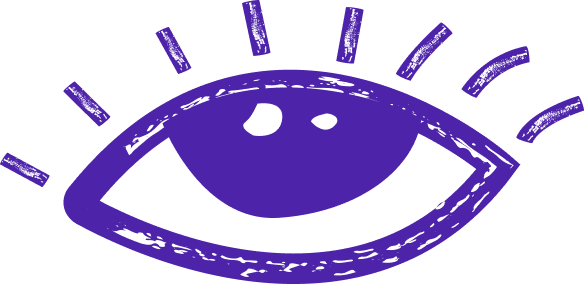
ascii
The AND Gate: A Foundational Element in Digital Logic and Circuit Design
ASCII, short for American Standard Code for Information Interchange, is a widely used character encoding standard that represents text in computers and other electronic devices. It was developed in the early 1960s by a committee led by Robert W. Bemer, with the aim of providing a consistent way to represent characters and symbols using binary code. ASCII is still widely used today and forms the foundation for many other character encoding schemes.
In computing, character encoding is the process of mapping characters to their corresponding binary representations. Since computers operate on binary code, which consists of zeros and ones, character encoding allows them to understand and process human-readable text. ASCII uses a 7-bit binary code to represent a total of 128 characters, including uppercase and lowercase letters, digits, punctuation marks, control characters, and some special symbols.
The ASCII character set includes a variety of characters that are commonly used in the English language. It covers the basic Latin alphabet (A-Z and a-z), numerals (0-9), punctuation marks, and control characters such as line feed, carriage return, and tab. The first 32 characters (0-31) are control characters, which are non-printable and used to control device operations. The remaining 96 characters (32-127) are printable characters.
One of the key advantages of ASCII is its compatibility with a wide range of devices and systems. Since ASCII uses a 7-bit code, it can be easily represented using the 8-bit byte, which is the fundamental unit of storage in most computers. This compatibility allows ASCII-encoded text to be transmitted and interpreted correctly across different platforms, operating systems, and programming languages.
While the original ASCII standard provided a solid foundation, it was primarily designed for the English language and lacked support for characters used in other languages and special symbols. To address this limitation, various extended ASCII standards were developed, which utilized the eighth bit of the byte to represent additional characters. These extended ASCII sets allowed for the representation of characters from different languages, including diacritical marks, currency symbols, and more.
Although ASCII is a fundamental character encoding scheme, it has been largely superseded by more comprehensive encoding standards, such as Unicode. Unicode provides a universal character set that encompasses characters from various writing systems, including ASCII. However, ASCII remains relevant in many areas of computing, particularly in legacy systems, file formats, and network protocols that rely on its simplicity and compatibility.
ASCII, the American Standard Code for Information Interchange, is a widely used character encoding standard that represents text using a 7-bit binary code. It provides a consistent and compatible way to represent characters and symbols in computers and electronic devices. While ASCII has been largely replaced by more comprehensive encoding schemes like Unicode, it remains a foundational element in computing and is still used in various contexts today.
Character Encoding and Binary Code
In computing, character encoding is the process of mapping characters to their corresponding binary representations. Since computers operate on binary code, which consists of zeros and ones, character encoding allows them to understand and process human-readable text. ASCII uses a 7-bit binary code to represent a total of 128 characters, including uppercase and lowercase letters, digits, punctuation marks, control characters, and some special symbols.
ASCII Character Set
The ASCII character set includes a variety of characters that are commonly used in the English language. It covers the basic Latin alphabet (A-Z and a-z), numerals (0-9), punctuation marks, and control characters such as line feed, carriage return, and tab. The first 32 characters (0-31) are control characters, which are non-printable and used to control device operations. The remaining 96 characters (32-127) are printable characters.
ASCII and Compatibility
One of the key advantages of ASCII is its compatibility with a wide range of devices and systems. Since ASCII uses a 7-bit code, it can be easily represented using the 8-bit byte, which is the fundamental unit of storage in most computers. This compatibility allows ASCII-encoded text to be transmitted and interpreted correctly across different platforms, operating systems, and programming languages.
Extended ASCII
While the original ASCII standard provided a solid foundation, it was primarily designed for the English language and lacked support for characters used in other languages and special symbols. To address this limitation, various extended ASCII standards were developed, which utilized the eighth bit of the byte to represent additional characters. These extended ASCII sets allowed for the representation of characters from different languages, including diacritical marks, currency symbols, and more.
ASCII in Modern Computing
Although ASCII is a fundamental character encoding scheme, it has been largely superseded by more comprehensive encoding standards, such as Unicode. Unicode provides a universal character set that encompasses characters from various writing systems, including ASCII. However, ASCII remains relevant in many areas of computing, particularly in legacy systems, file formats, and network protocols that rely on its simplicity and compatibility.
Conclusion
ASCII, the American Standard Code for Information Interchange, is a widely used character encoding standard that represents text using a 7-bit binary code. It provides a consistent and compatible way to represent characters and symbols in computers and electronic devices. While ASCII has been largely replaced by more comprehensive encoding schemes like Unicode, it remains a foundational element in computing and is still used in various contexts today.
Let’s build your next digital product — faster, safer, smarter.
Book a free consultationWork with a team trusted by top-tier companies.







